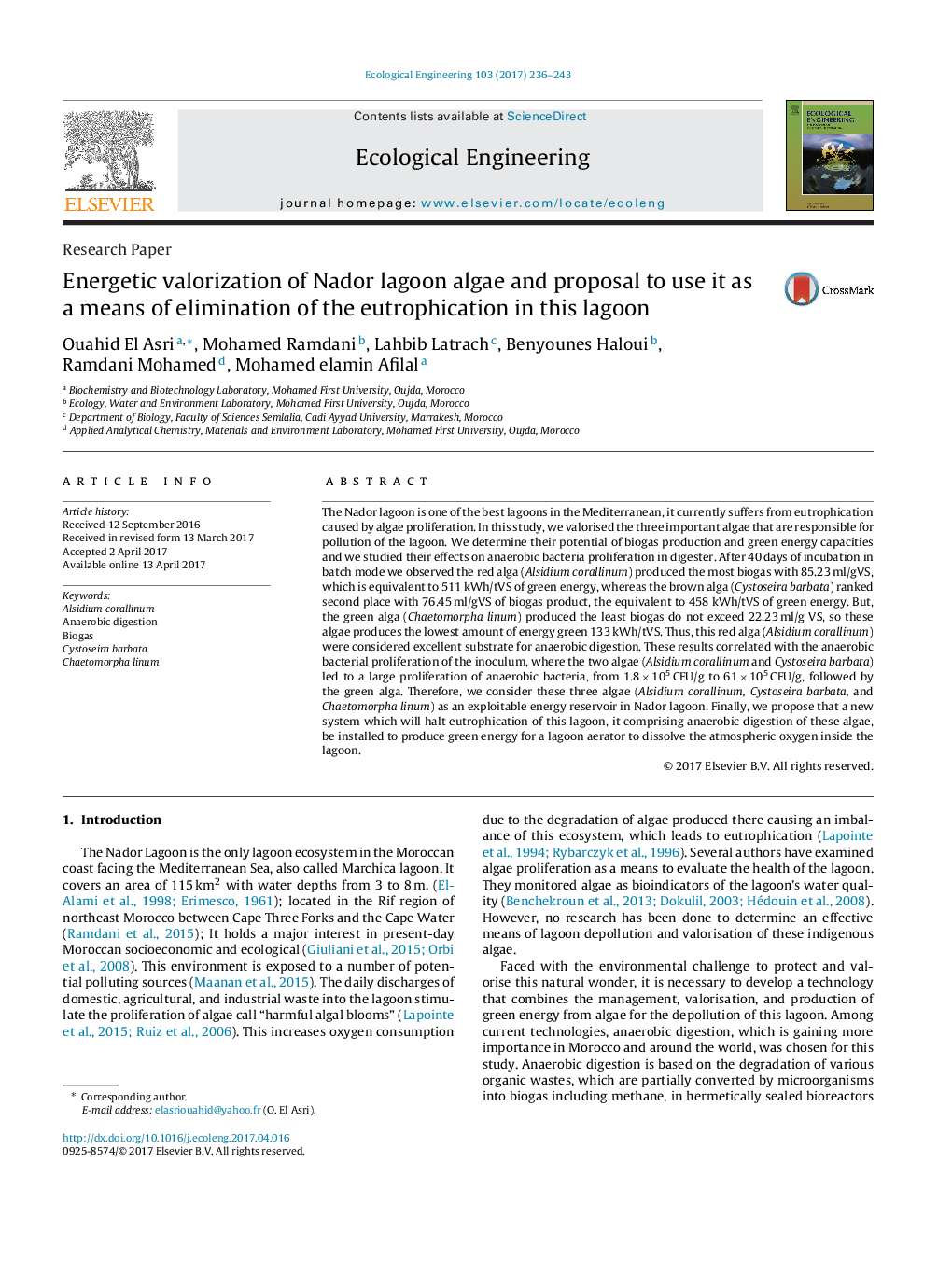| کد مقاله | کد نشریه | سال انتشار | مقاله انگلیسی | نسخه تمام متن |
|---|---|---|---|---|
| 5743583 | 1412315 | 2017 | 8 صفحه PDF | دانلود رایگان |
- The red alga (Alsidium corallinum) produced the most biogas (85.23Â ml/gVS).
- The green alga (Chaetomorpha linum) produced the least biogas (22.23Â ml/g VS).
- The brown alga (Cystoseira barbata) ranked second place with 76.45Â ml/gVS of biogas product.
- The three lagoon-polluting algae are green energy producers.
- We propose a new system which will halt eutrophication of this lagoon.
The Nador lagoon is one of the best lagoons in the Mediterranean, it currently suffers from eutrophication caused by algae proliferation. In this study, we valorised the three important algae that are responsible for pollution of the lagoon. We determine their potential of biogas production and green energy capacities and we studied their effects on anaerobic bacteria proliferation in digester. After 40Â days of incubation in batch mode we observed the red alga (Alsidium corallinum) produced the most biogas with 85.23Â ml/gVS, which is equivalent to 511 kWh/tVS of green energy, whereas the brown alga (Cystoseira barbata) ranked second place with 76.45Â ml/gVS of biogas product, the equivalent to 458 kWh/tVS of green energy. But, the green alga (Chaetomorpha linum) produced the least biogas do not exceed 22.23Â ml/g VS, so these algae produces the lowest amount of energy green 133Â kWh/tVS. Thus, this red alga (Alsidium corallinum) were considered excellent substrate for anaerobic digestion. These results correlated with the anaerobic bacterial proliferation of the inoculum, where the two algae (Alsidium corallinum and Cystoseira barbata) led to a large proliferation of anaerobic bacteria, from 1.8Â ÃÂ 105Â CFU/g to 61Â ÃÂ 105Â CFU/g, followed by the green alga. Therefore, we consider these three algae (Alsidium corallinum, Cystoseira barbata, and Chaetomorpha linum) as an exploitable energy reservoir in Nador lagoon. Finally, we propose that a new system which will halt eutrophication of this lagoon, it comprising anaerobic digestion of these algae, be installed to produce green energy for a lagoon aerator to dissolve the atmospheric oxygen inside the lagoon.
Journal: Ecological Engineering - Volume 103, Part A, June 2017, Pages 236-243
